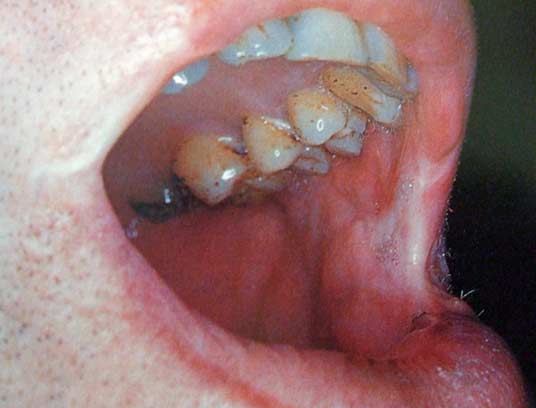Herpangina is a specific infectious disease characterized by the presence of small papulovesicular lesions on the anterior pillars of the tonsillar fauces and the soft palate; it occurs frequently in outbreaks among infants and children during the summer and early autumn.
History.
It was first described in 1920 as a distinct clinical syndrome by Zahorsky in a report of 82 cases of “herpetic sore throat”; he subsequently suggested that this “peculiar throat disease the clinical features of which are sufficiently clear to separate from other diseases of the mouth and throat” be named herpangina. Two other outbreaks of illness resembling herpangina were reported in 1939 and 1941.
Etiology.
Herpangina was not described again until 1950 when Huebner et al. described studies in which certain group A Coxsackie viruses were recovered from 32 of 37 herpangina patients, and «n the basis of epidemiologic evidence an etiologic association was suggested. Numerous clinical and epidemiologic reports from many parts of the world have confirmed an etiologic relationship between certain group A Coxsackie viruses and herpangina (see table). Reports have appeared recently relating certain Coxsackie B and echovirus infections temporally with herpangina-like syndromes; further epidemiologic studies are needed to elucidate the role of the Coxsackie B and echoviruses in the pathogenesis of herpangina- like syndromes.
Epidemiology.
Herpangina is a common infectious disease occurring frequently in outbreaks, but also sporadically, in most parts of the world predominantly during the summer and early autumn. Although it occasionally occurs in adults, the highest incidence is found in infants and young children. Multiple cases in a family are frequently observed. Spread is from person to person with an incubation period of about four days. Subclinical infections as well as illnesses without the characteristic herpangina lesions commonly occur in family members infected with the same serotype as that recovered from the herpangina case. Immunity to the infecting type appears permanent, but recurrent attacks occur as a result of infection with a,different serotype.
Pathology.
The pathologic process of herpangina in man is not known, as no deaths have been, reported.
Clinical Manifestations.
The illness is characterized by a sudden elevation of temperature (101 to 105° F.) and the development of the characteristic throat lesions in association with variable systemic signs and symptoms. In a study of 69 Coxsackie A virus-positive infants and children with herpangina, 89 per cent developed a fever which lasted an average of two days with a range of one to four days; 5 per cent of patients with temperature elevations developed febrile convulsions. Anorexia, dysphagia, or sore throat was evident in 70 per cent, vomiting in 38 per cent, abdominal pain in 21 per cent, and headache in 16 per cent (Parrott and Cramblett, 1957).
The disease is characterized by the presence of discrete 1 to 2-mm. grayish papulovesicular pharyngeal lesions on an erythematous base. These lesions, which gradually progress to slightly larger ulcers, may appear on the anterior pillars of the tonsillar fauces, the soft palate, the uvula, and the tonsils, and are usually present for four to six days after the onset of illness. In one herpangina case in a seven-year-old girl, small ulcers were also observed on the labia and skin near the genital region (Mitchell and Dempster, 1955). White blood cell counts usually reveal.no characteristic abnormality; cerebrospinal fluid examinations have been normal.
Herpangina Diagnosis,You Must Know
In a typical case, careful, repeated examination of the oral cavity and pharynx should facilitate the diagnosis. Herpangina can be differentiated from acute infectious gingivostomatitis resulting from herpes simplex virus, because the lesions in the latter disease are located on the gums, lips, tongue, or buccal mucous membrane; lesions may also be found on the anterior pillars of the faucial tonsils or soft palate (as in herpangina), but almost always they occur in association with similar lesions in the anterior portions of the mouth.
In addition, herpetic gingivostomatitis occurs sporadically in all seasons of the year. In recurrent; aphthosis the lesions do not usually occur in the pharynx and are not generally accompanied by fever. Herpangina should also be differentiated from “hand, foot, and mouth disease” and acute lymphonodular pharyngitis, both of which are described below.
Treatment
Herpangina is a self limited disease, with complete recovery occurring usually within four to six days. There is no specific therapy for the Coxsackie virus infection. Treatment is supportive and symptomatic.
